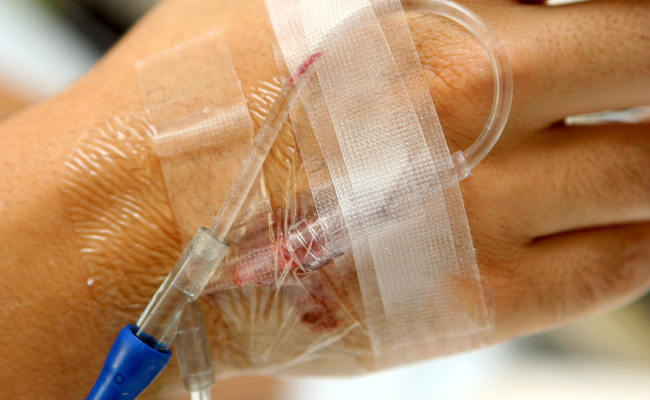How to Treat Intravascular Line Infections?
- January 08, 2024
- No Comments

What is an Intravascular Line Infection?
Intravascular line infections encompass infections occurring along the pathways of intravenous (IV) lines, central venous catheters, or other vascular access devices. These infections pose a substantial risk, leading to severe complications for individuals undergoing intravenous treatments or medications. A related complication is infective endocarditis, an infection affecting the heart valves or endocardium—the lining of the heart chambers. Typically caused by bacteria entering the bloodstream and infecting the heart, sources of these bacteria can include the mouth, skin, intestines, respiratory system, or urinary tract. In rare instances, fungi or other microorganisms may also contribute to infective endocarditis.
This condition necessitates prompt medical attention as untreated cases can result in damage to heart valves, leading to complications such as stroke, damage to other organs, heart failure, and, in extreme cases, death. While infective endocarditis is uncommon in individuals with healthy hearts, those with pre-existing heart conditions face a higher risk
Why Do Intravascular Line Infections Occur?
The occurrence of intravascular line infections is often linked to the introduction of bacteria or other pathogens into the bloodstream through the IV line or catheter. This can happen during the insertion process, through contamination of the catheter hub, or by migration of bacteria from the surrounding skin. Several factors contribute to the development of these infections, including the duration of catheter use, the type of catheter, the patient's overall health, and the effectiveness of infection prevention measures during insertion and maintenance of the line.
How are Intravascular Line Infections Diagnosed?
Diagnosing intravascular line infections involves a combination of clinical assessment and laboratory tests. Common diagnostic methods include:
- Blood Cultures: Culturing a sample of the patient's blood helps identify the specific pathogen causing the infection and guides appropriate treatment.
- Imaging Studies: Techniques such as ultrasound or X-ray may be employed to visualize the catheter's position and assess for signs of infection or complications.
- Clinical Evaluation: Monitoring for symptoms such as fever, chills, redness, or swelling at the catheter site, as well as systemic signs of infection, aids in diagnosis.
- Catheter Tip Culture: If the catheter is removed, culturing the tip can provide additional information about the source of infection.
Treatment Solutions for Intravascular Line Infections
Antibiotic Therapy:
- Empirical Treatment: Based on the suspected pathogen, broad-spectrum antibiotics are often initiated immediately while awaiting culture results.
- Targeted Treatment: Once culture results are available, antibiotics may be adjusted to specifically target the identified pathogen.
Catheter Removal or Replacement:
- Prompt Removal: In many cases, the infected catheter is promptly removed to prevent the spread of infection.
- New Catheter Placement: If intravenous access is still required, a new catheter may be placed in a different site.
Anticoagulant Therapy:
- In some cases, especially if thrombosis is present, anticoagulant medications may be prescribed to prevent the formation of blood clots.
Supportive Care:
- Patients may require supportive care, including intravenous fluids, pain management, and fever-reducing medications.
Benefit Points of Treating Intravascular Line Infections
- Prevention of Systemic Spread: Timely treatment helps prevent the spread of infection to the bloodstream and other organs, reducing the risk of severe complications.
- Reduced Risk of Complications: Prompt removal of infected catheters lowers the risk of complications such as sepsis, endocarditis, or thrombosis.
- Minimized Antibiotic Resistance: Targeted antibiotic therapy, guided by culture results, helps minimize the development of antibiotic resistance.
- Improved Patient Outcomes: Effective treatment contributes to improved patient outcomes, reducing the duration and severity of infection-related symptoms.
- Preservation of Vascular Access: Early intervention preserves the integrity of vascular access, enabling healthcare providers to use alternative sites for intravenous treatments if necessary.
- Enhanced Infection Control Practices: Experience with intravascular line infections prompts healthcare facilities to reinforce and improve infection control measures during catheter insertion and maintenance.
Comments (0)